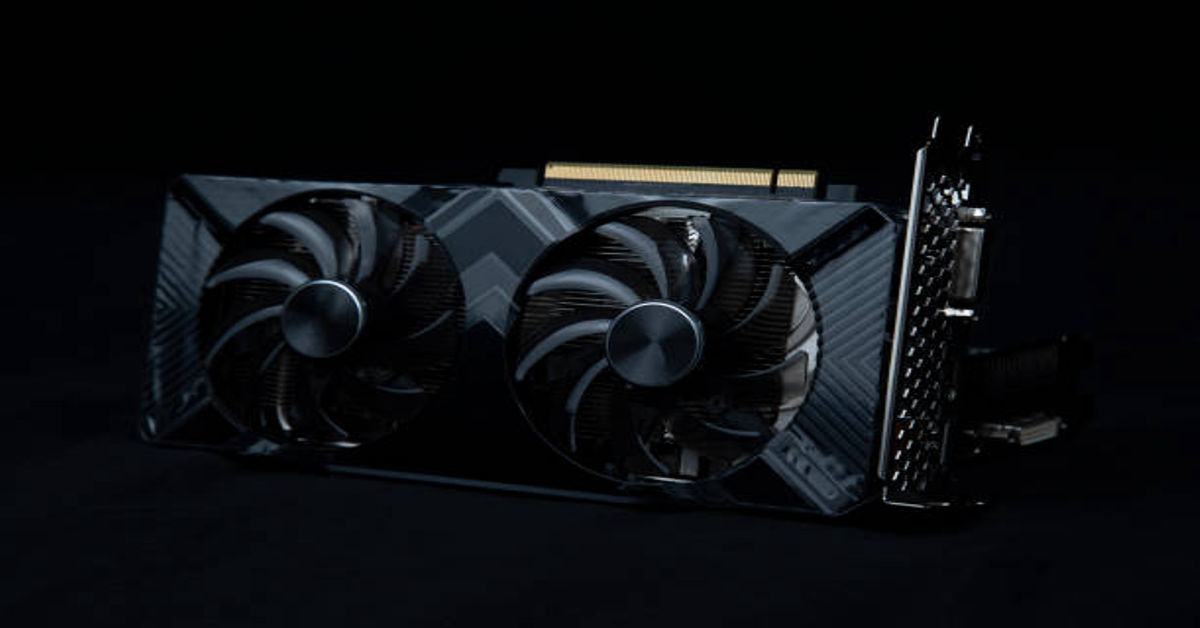The RTX 5090 and 5090D graphics cards built on NVIDIA’s latest architecture promised groundbreaking performance and next-gen efficiency. However, early adopters have encountered an alarming issue bricking. After installing certain drivers, these high-end GPUs become entirely non-functional, leaving users with expensive but unusable hardware. This article dives into the RTX 5090 and 5090D Bricked Issues causes, scope, affected models, and potential solutions related to the bricking problems. Whether you’re a current owner or planning to upgrade, this comprehensive guide will help you make an informed decision.
Overview of RTX 5090 and 5090D GPUs
The RTX 5090 is designed to be a flagship GPU, setting new benchmarks in real-time rendering, AI-enhanced performance, and 4K+ gaming. The 5090D, meanwhile, is typically an export-optimized variant aimed at specific regional markets.
Key specifications of these GPUs include:
- High core count
- Massive VRAM bandwidth
- PCIe 5.0 support
- DLSS 4.0 and Ray Tracing enhancements
Despite this impressive spec sheet, serious operational issues have raised concerns within the tech community.
What Does “Bricked” Mean in GPU Context
When a GPU is “bricked,” it essentially becomes as useful as a brick—non-functional and undetectable by the operating system. A bricked graphics card won’t post to BIOS, display any output, or appear in device manager.
For users, this means:
- No video signal
- No system boot (if set as primary GPU)
- Inability to flash or recover firmware
- Device completely unusable without advanced recovery tools
Bricking Incidents: User-Reported Symptoms
Reports from various tech forums show a pattern in how the issue arises:
- Card initially installs and operates
- After driver update or reboot, system freezes or black screens
- On restart, GPU is no longer detected
- Attempting recovery through BIOS reset or safe mode fails
- Motherboard reports PCIe slot error or code 43 in rare cases
Some users experienced issues right after opening and installing the GPU, while others encountered problems following updates or configuration changes.
Common Factors Behind the Bricking
Several overlapping elements appear across most reported cases:
- Driver installation triggers issue
- BIOS incompatibility on certain motherboards
- PCIe lane misconfiguration or signal fault
- Export-modified firmware in 5090D variant
- Unverified factory overclock profiles
These factors suggest that the problem may not lie in the hardware alone but in how the GPU interacts with other system components.
Driver-Related Failures
One of the most frequently cited causes is driver-related malfunction. The issue often appears after the installation of the latest or beta GPU drivers.
Indicators that drivers may be to blame:
- Card works on initial boot with default VGA driver
- Bricking happens immediately after NVIDIA driver installation
- Rolling back drivers doesn’t resolve the issue
- Fresh install of OS or drivers fails to detect the GPU
Some users speculated that the drivers might be initializing GPU clocks or voltages beyond safe parameters, leading to shutdown and non-recovery.
BIOS and Firmware Conflicts
BIOS and firmware issues are also among the top suspects. Inconsistent or misconfigured firmware across board partner variants may introduce instability.
Key observations include:
- Users flashing custom or factory BIOS experienced immediate failure
- Motherboards with older BIOS versions more likely to brick the GPU
- 5090D units possibly loaded with region-specific BIOS tweaks
- Secure boot or CSM mode inconsistencies exacerbate the risk
While a few users attempted reflashing the VBIOS using dual BIOS switches or SPI programmers, the success rate remains extremely low.
PCIe Compatibility Issues
PCIe compatibility, especially on certain chipsets, is another frequently mentioned cause. Some motherboards don’t fully support the power and signaling requirements of these new-generation cards.
Relevant patterns include:
- PCIe 4.0 boards showing higher failure rates than PCIe 5.0
- Card fails to downscale properly to lower bandwidth slots
- BIOS-level lane negotiation fails to complete
- High latency or packet loss on specific lanes during driver initialization
Switching to Gen 3 manually in BIOS sometimes prevented the issue but not reliably.
Affected GPU Brands and Models
The problem does not seem isolated to one specific manufacturer. Board partners identified in the issue include:
- Colorful
- Manli
- Gigabyte
All models involved were based on the RTX 5090 or the 5090D variant. Even among these, certain factory-overclocked or limited regional versions were more frequently cited.
Export Variant Concerns: What Is 5090D
The 5090D is often understood to be a region-specific or export-optimized version of the RTX 5090. These cards might carry:
- Alternative BIOS configurations
- Slight hardware changes to meet import regulations
- Different factory testing procedures
- Reduced warranty in non-native markets
Such changes may contribute to compatibility issues, especially in systems built for standard RTX 5090 models.
Troubleshooting: Temporary Fixes and Workarounds
While full recovery remains rare, users have reported some temporary workarounds:
- Booting in integrated graphics mode and disabling discrete GPU
- Manually setting PCIe mode to Gen 3 or Gen 4
- Using DDU (Display Driver Uninstaller) in safe mode
- Updating motherboard BIOS before installing drivers
- Flashing a verified VBIOS from a working model (risky and not advised for general users)
These steps may prevent bricking in some cases but are not guaranteed.
Industry Reactions and User Feedback
Enthusiasts and professionals alike are voicing frustration over the lack of transparency from manufacturers. Affected users call for:
- Formal acknowledgments
- Driver rollbacks or hotfixes
- Extended warranty for affected units
- Public list of verified-safe BIOS versions
The tech community is actively sharing logs, recovery attempts, and compatibility lists to crowdsource a solution.
Preventive Measures for New Buyers
If you’re planning to purchase an RTX 5090 or 5090D, consider the following:
- Buy from authorized resellers only
- Confirm motherboard compatibility, especially PCIe version
- Avoid installing non-certified drivers or BIOS updates
- Watch for known model numbers associated with issues
- Use motherboards with proven success rates among current owners
Waiting for a confirmed fix may be the wisest course for risk-averse buyers.
Should You Avoid RTX 5090 or 5090D Right Now
Given the unpredictable nature of the issue and limited recovery success, many users are postponing their purchase. For professionals who rely on GPU stability, avoiding these models until an official statement or fix is released might be the most practical move RTX 5090 and 5090D Bricked Issues.
Gamers and enthusiasts willing to troubleshoot and take calculated risks may still proceed, but should exercise caution with installation procedures.
Summary Table of Bricked RTX 5090 Series Issues
| Aspect | Observation/Detail |
| Affected Models | RTX 5090, 5090D |
| Major Brands Involved | Colorful, Manli, Gigabyte |
| Triggering Event | Driver installation or system reboot |
| Common Symptoms | GPU undetected, black screen, system freeze |
| Possible Causes | Driver fault, BIOS mismatch, PCIe lane errors |
| Export Variant Issues | 5090D may use custom firmware or different hardware spec |
| Recovery Success Rate | Very low, even with advanced tools |
| Known Temporary Fixes | PCIe mode change, BIOS update, integrated GPU fallback |
| Advice for New Buyers | Verify compatibility, wait for manufacturer updates |
Conclusion
The RTX 5090 and 5090D Bricked Issues graphics cards is a significant concern for both consumers and industry insiders. Root causes point toward a mix of driver instability, BIOS mismatches, and PCIe inconsistencies, particularly with export variants like the 5090D.
Until a comprehensive solution is offered, buyers are advised to approach with caution, verify their system compatibility, and avoid unofficial firmware or overclock settings. Manufacturers and the broader tech community are likely working behind the scenes to resolve this, but user vigilance remains key in the meantime.
Frequently Asked Questions
What exactly is causing the RTX 5090 to brick?
The root cause is not officially confirmed but seems related to driver updates, BIOS incompatibility, and PCIe signaling issues.
Is the RTX 5090D more vulnerable than the regular 5090?
Yes, due to potential firmware differences or region-specific modifications, the 5090D appears to be more prone to failure.
Can a bricked 5090 be recovered?
In most cases, no. Recovery attempts like VBIOS flashing or SPI programming have low success rates.
Are all brands affected equally?
Current user reports highlight Colorful, Manli, and Gigabyte, but it’s possible that more brands may face similar issues over time.
Should I wait before buying a 5090 or 5090D?
If GPU reliability is critical for your work or gaming, waiting for official updates or fixes is advisable.







